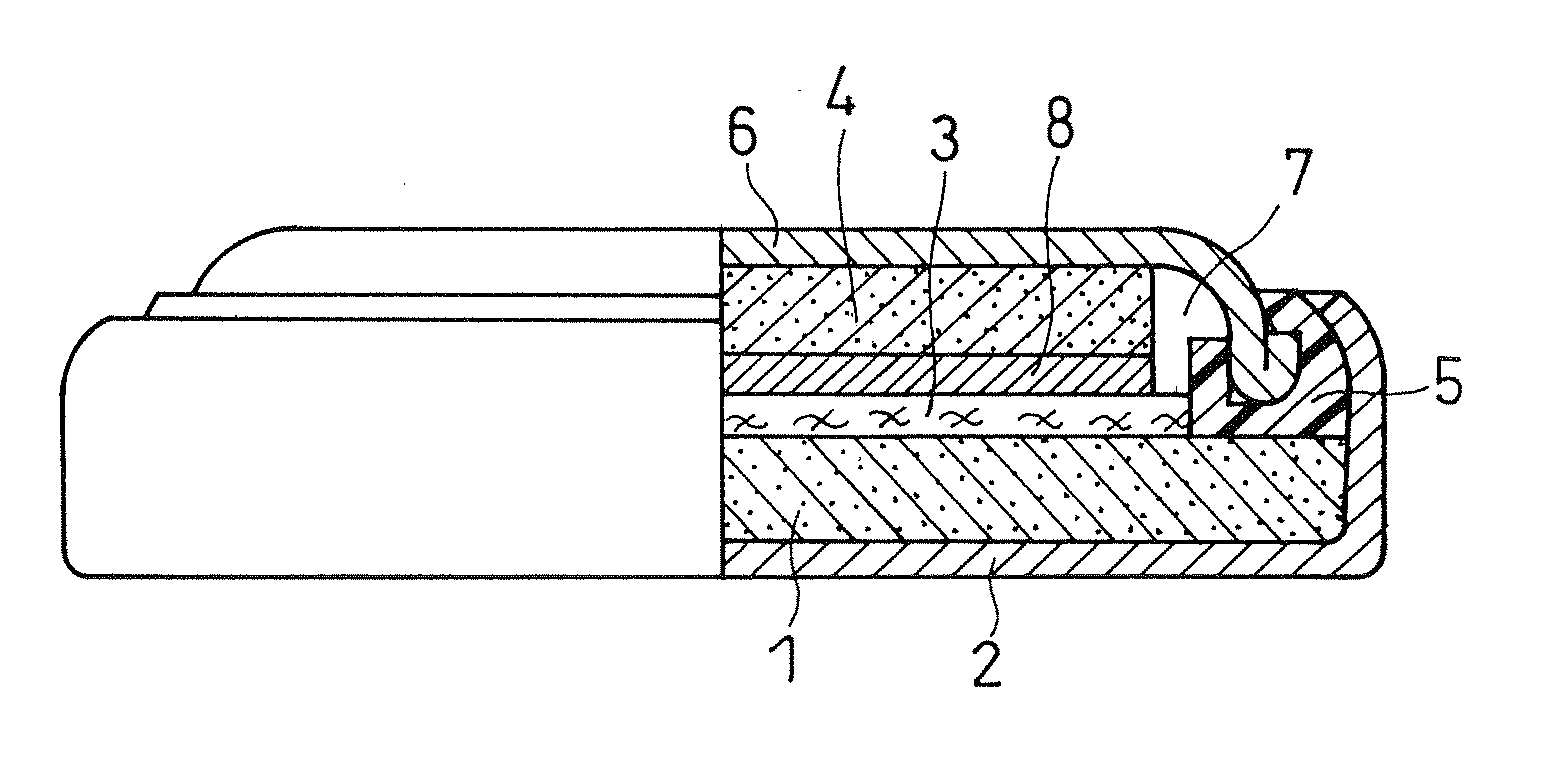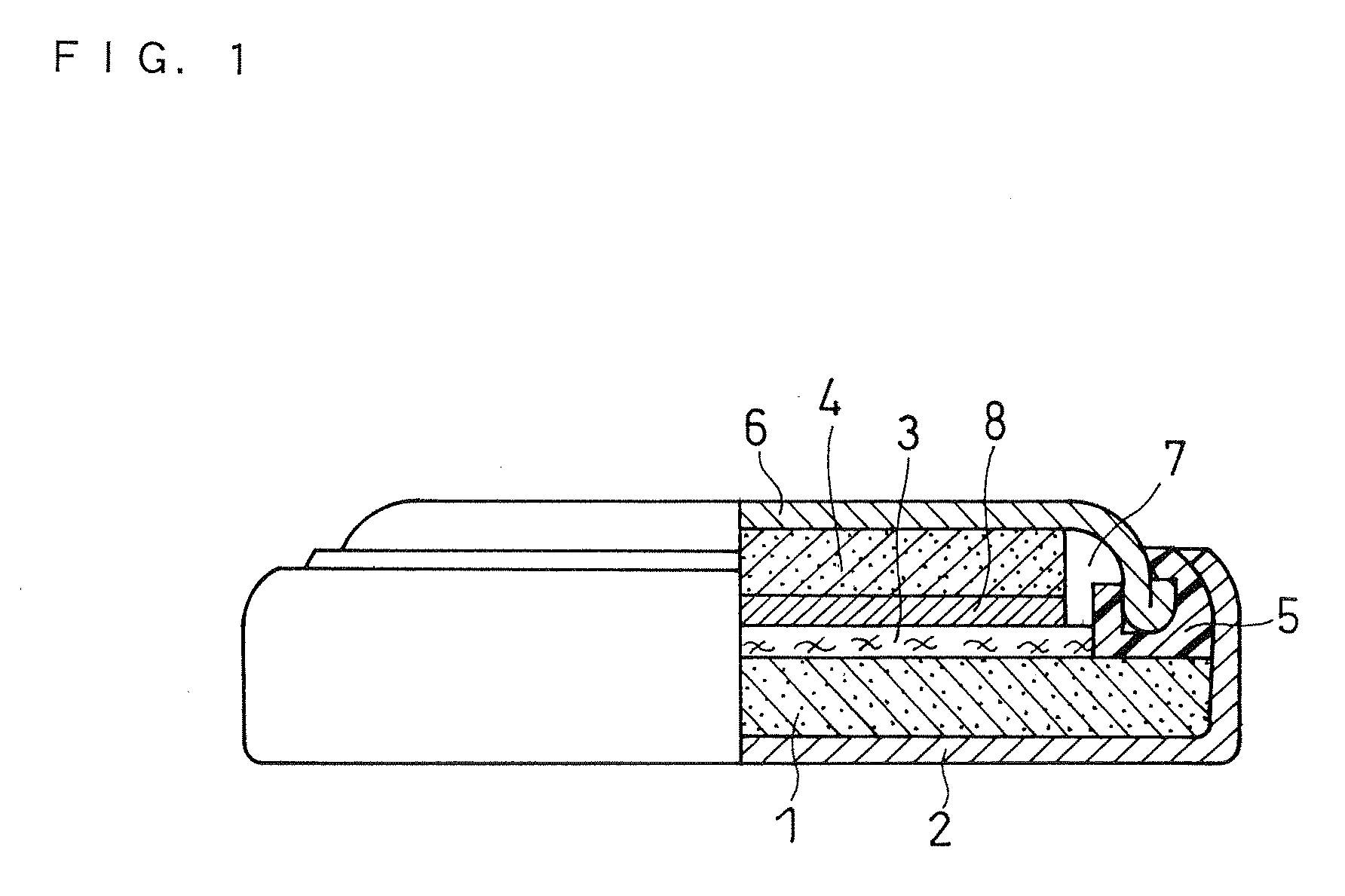Negative electrode and non-aqueous electrolyte secondary battery using the same
a secondary battery and negative electrode technology, applied in the field of negative electrodes for non-aqueous electrolyte secondary batteries, can solve the problems of reducing the charge/discharge cycle performance of batteries, affecting so as to achieve the effect of improving the charge/discharge cycle performan
- Summary
- Abstract
- Description
- Claims
- Application Information
AI Technical Summary
Benefits of technology
Problems solved by technology
Method used
Image
Examples
example 1
[0101] A coin type battery shown in FIG. 1, which is the non-aqueous electrolyte secondary battery of the present invention, was prepared by the following procedure. FIG. 1 is a front view of the coin type battery with a portion shown in a cross-section.
(1) Preparation of Negative Electrode Active Material
[0102] Ti powder (purity: 99.9%, particle size: 100 to 150 μm) and Si powder (purity: 99.9%, average particle size: 3 μm) were mixed so that the resulting alloy was composed of a TiSi2 phase (B phase) and a Si phase (A phase) and the Si phase content in the alloy was 20 parts by weight per 100 parts by weight of the total of the Si phase and the TiSi2 phase.
[0103] 3.5 kg of the mixed powder prepared above was put in the container of a vibrating mill (made by CHUO KAKOHKI CO., LTD., Model FV-20). Further, stainless steel balls (diameter: 2 cm) were put in the container so that the balls account for 70% by volume of the container volume. After evacuating the container, argon gas ...
example 2
[0115] A porous substrate was prepared by rolling a felt available from Kureha Corporation (product name: KURECA felt) so that the felt had a thickness of 300 μm and a porosity of 20%. The porous substrate made of the felt had an average pore size of about 50 μm. A battery was prepared in the same manner as in Example 1 using the porous substrate.
example 3
[0116] A porous substrate was prepared by rolling a paper available from TORAY INDUSTRIES, INC (product name: Carbon Paper) so that the paper had a thickness of 300 μm and a porosity of 20%. The porous substrate made of the paper had an average pore size of about 50 μm. A battery was prepared in the same manner as in Example 1 using the porous substrate.
PUM
 Login to View More
Login to View More Abstract
Description
Claims
Application Information
 Login to View More
Login to View More - R&D
- Intellectual Property
- Life Sciences
- Materials
- Tech Scout
- Unparalleled Data Quality
- Higher Quality Content
- 60% Fewer Hallucinations
Browse by: Latest US Patents, China's latest patents, Technical Efficacy Thesaurus, Application Domain, Technology Topic, Popular Technical Reports.
© 2025 PatSnap. All rights reserved.Legal|Privacy policy|Modern Slavery Act Transparency Statement|Sitemap|About US| Contact US: help@patsnap.com


